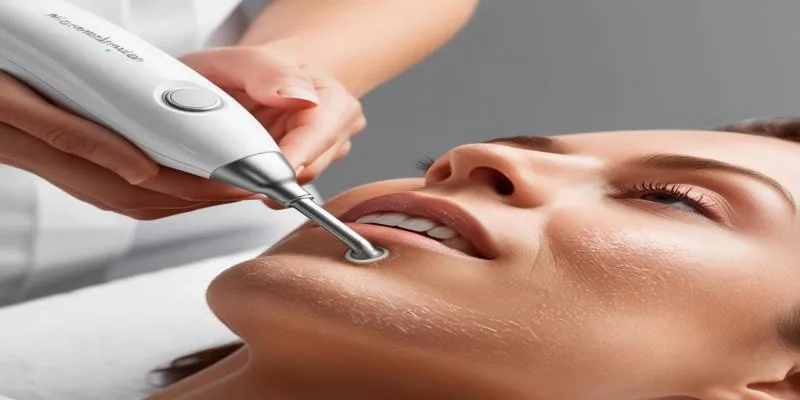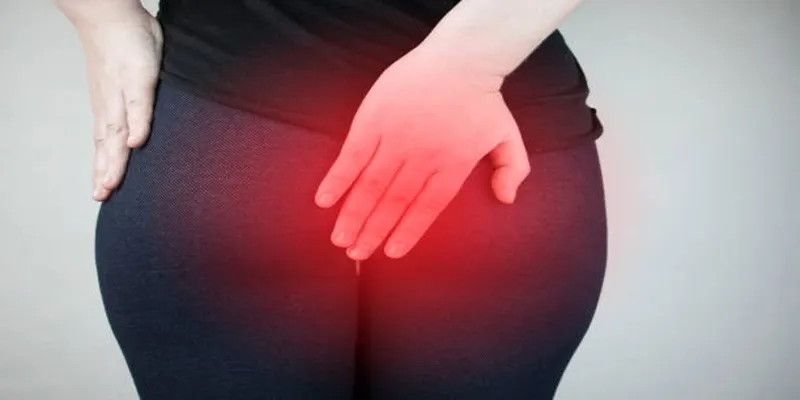What Is Intense Pulsed Light (IPL) Treatment?
Have you ever wondered what lies beneath flawless, youthful skin? The secret could very well be IPL treatment. As a leader in skincare technology, Intense Pulsed Light (IPL) utilizes light to address issues ranging from sun damage to unwanted hair growth. This comprehensive guide will explore the science behind IPL, its numerous applications, and what you can expect from this advanced skin treatment.
What is IPL Treatment?
 Intense
Pulsed Light is a next-generation aesthetic treatment that uses light energy
to address various skin conditions. This non-invasive treatment employs broad-
spectrum light waves, making it versatile for those seeking to improve their
skin.
Intense
Pulsed Light is a next-generation aesthetic treatment that uses light energy
to address various skin conditions. This non-invasive treatment employs broad-
spectrum light waves, making it versatile for those seeking to improve their
skin.
How IPL Works
The IPL device emits a broad-spectrum light pulse that penetrates the skin to varying depths. Various skin pigments, including melanin and hemoglobin, absorb these light pulses, converting energy into heat. This leads to the selective destruction of the target cells without damaging surrounding tissue.
Common Indications
Some common indications for IPL treatment include the following skin concerns:
- Reduction of age spots and sun damage
- Smoothing fine lines and wrinkles
- Treating acne and post-acne scars
- Reducing rosacea-related redness
- Hair removal
- Improving overall skin texture and tone
During an IPL session, you will wear protective eyewear while a professional applies a cooling gel to your skin. The IPL device is then moved over the treatment area in a series of light pulses. You may feel a slight stinging sensation, often likened to the snapping of a rubber band. Sessions typically last from 20 to 30 minutes, depending on the size of the treated area.
Benefits and Considerations
IPL offers several advantages over other skin treatments, such as minimal downtime and the ability to address multiple skin issues simultaneously. However, it’s always best to consult a qualified practitioner to determine if IPL suits you, as some skin types and conditions may not be ideal for this treatment.
How Does IPL Treatment Work?
The Science Behind IPL
IPL is an effective treatment modality that targets the skin with broad- spectrum light. Unlike laser treatments, which use a single wavelength, IPL emits light energy in several wavelengths. This versatility allows for the simultaneous treatment of various skin conditions.
The device emits quick, high-intensity light pulses that penetrate beneath the skin’s surface. Once the light energy reaches its target pigment, blood vessels, or hair follicle, it is transformed into heat. This thermal action is where the effectiveness of IPL lies.
Targeting Specific Skin Concerns
In pigmentary issues, melanin absorbs light energy, fragmenting dark spots and sun damage. Hemoglobin in blood vessels absorbs heat to treat vascular problems, causing vessels to collapse and become invisible over time. For hair removal, light targets melanin in hair follicles, sending them into a dormant phase.
This selective targeting leaves surrounding tissue unaffected, making IPL relatively “gentle” compared to more invasive treatments. IPL’s uniqueness lies in its ability to target specific chromophores while leaving surrounding tissue intact.
Treatment Process
An IPL session involves moving a handheld device over the skin to deliver pulses of light. You may feel mild stinging, commonly described as snapping a rubber band against your skin. Most treatments take 20 to 30 minutes, depending on the treated area.
Multiple sessions are often required as the skin reacts gradually to the treatment. The number of sessions varies based on the condition being treated and skin characteristics.
Top Benefits of IPL Treatments
 IPL
treatments have gained popularity due to their versatility and effectiveness
in addressing major skin concerns. Here are some notable benefits that make
IPL a choice for many seeking to improve their skin’s appearance and health.
IPL
treatments have gained popularity due to their versatility and effectiveness
in addressing major skin concerns. Here are some notable benefits that make
IPL a choice for many seeking to improve their skin’s appearance and health.
Multi-Purpose Skin Rejuvenation
This treatment offers a wide range of skin rejuvenation options. With IPL, you can address several issues simultaneously, including:
- Smoothing sun damage and age spot appearance
- Decreasing the visibility of fine lines and wrinkles
- Evening skin texture and tone
- Reducing rosacea-related redness
- Fading freckles and other pigmentation irregularities
This multi-faceted approach allows for targeting a variety of skin concerns in one session, saving time and minimizing the need for multiple specialized treatments.
Minimal Downtime and Discomfort
One of IPL’s most attractive features is its relatively short recovery time. After an IPL session, you can usually resume normal activities, unlike more invasive treatments. You may experience redness or slight swelling, but these effects typically subside within a few hours or a day.
Generally, the treatment is well-tolerated, with most patients describing the sensation as a mild snapping or warm pinch against the skin. IPL is appealing for those seeking noticeable improvements without significant pain or extended downtime.
Durable Results with Proper Maintenance
With good skincare, you can achieve long-term results from a series of IPL treatments. Many clients notice improvement after just a few treatments, with the best results typically seen after 3-6 treatments spaced weeks apart.
To maximize your treatment’s benefits, avoid sun damage and maintain a consistent skincare routine. This will help prolong the results of your IPL treatments, leaving your skin smoother and brighter for months.
Conditions Treated with IPL Therapy
IPL is flexible and treats a wide variety of skin conditions. Its ability to address numerous skin issues simultaneously makes it popular and time- effective for treating many patients. A critical application of IPL is managing skin pigmentation. It minimizes the appearance of:
- Sun spots and age spots
- Freckles
- Melasma
- Post-inflammatory hyperpigmentation
Light energy is absorbed into the darker areas, breaking up melanin so the body can naturally eliminate the pigmented cells.
Vascular Conditions
IPL therapy works well for vascular skin conditions. It effectively treats:
- Rosacea
- Broken capillaries
- Spider veins
- Port wine stains
The light energy heats abnormal blood vessels, causing them to collapse and naturally reabsorb into the body.
Skin Texture and Tone
In addition to treating pigmentation and vascular conditions, IPL enhances overall skin texture and tone. It is beneficial for:
- Fine lines and wrinkles
- Large pores
- Uneven skin texture
- Dull complexion
The treatment stimulates collagen production, plumping and smoothing the skin to reduce the appearance of fine lines and improve skin quality.
Hair Removal
IPL is also used for hair removal. It targets the melanin in hair follicles, destroying them and inhibiting further growth in the treated area. This effectively reduces unwanted hair on various body parts.
Conclusion
As you consider IPL treatment for your skin concerns, weigh the potential benefits against the risks and costs. Consult with a Board-Certified Dermatologist to ensure you are an ideal candidate and develop a customized treatment plan. While IPL can be transformative for many, results vary, and most skin conditions require more than one session.




